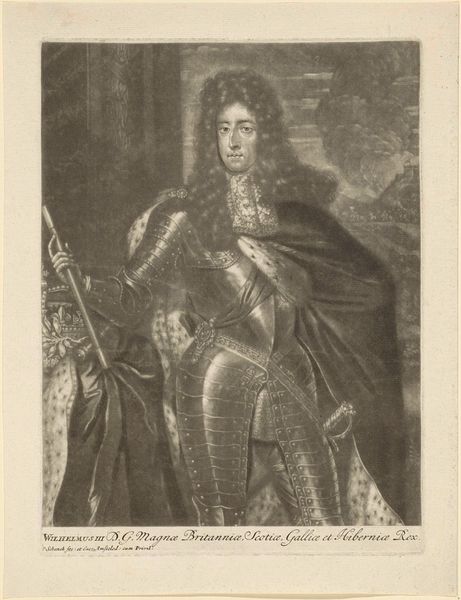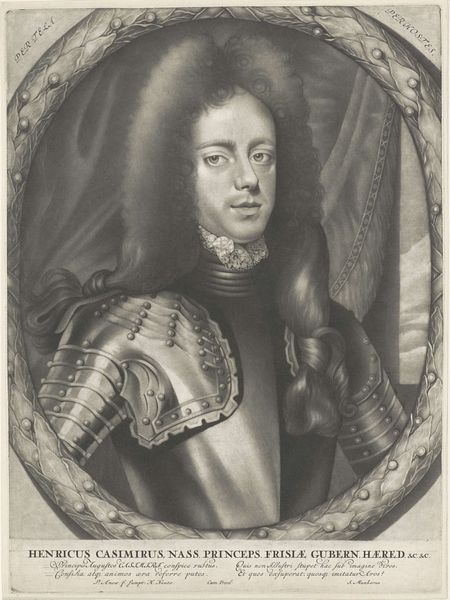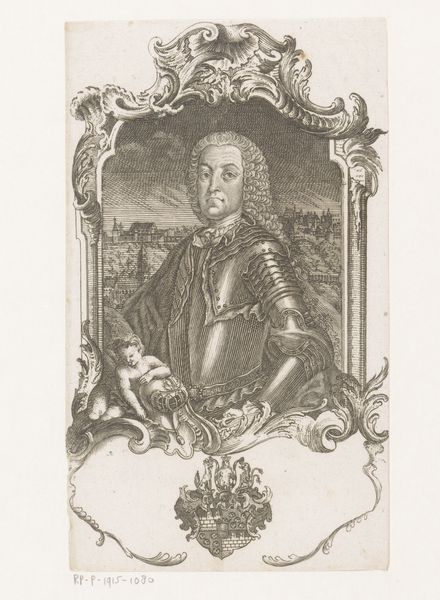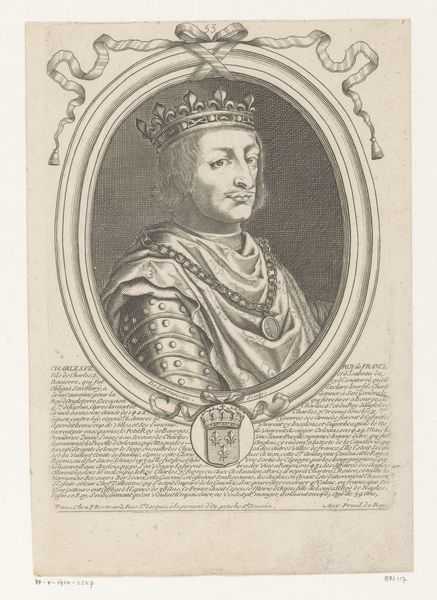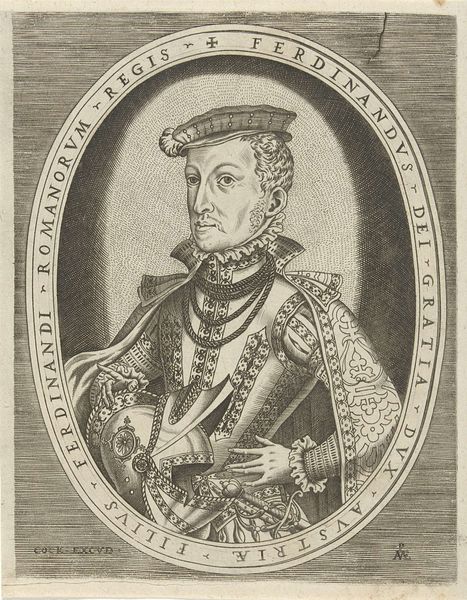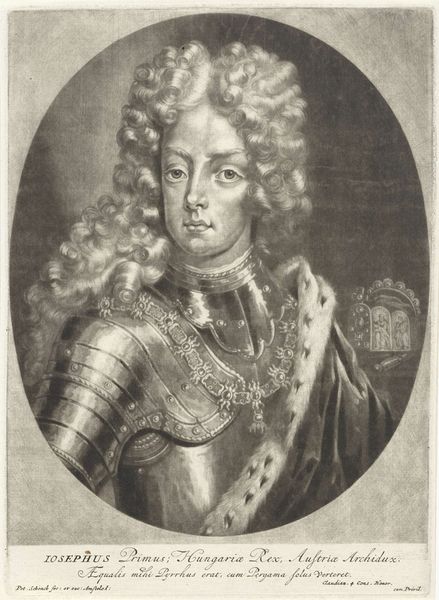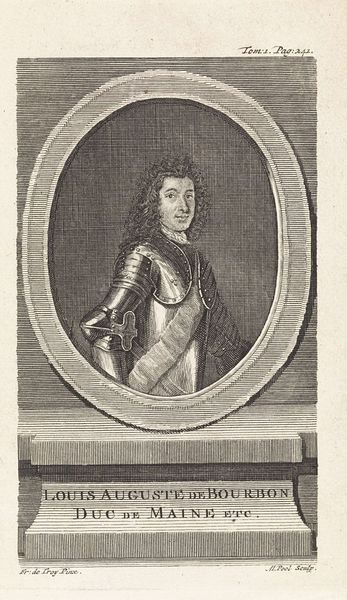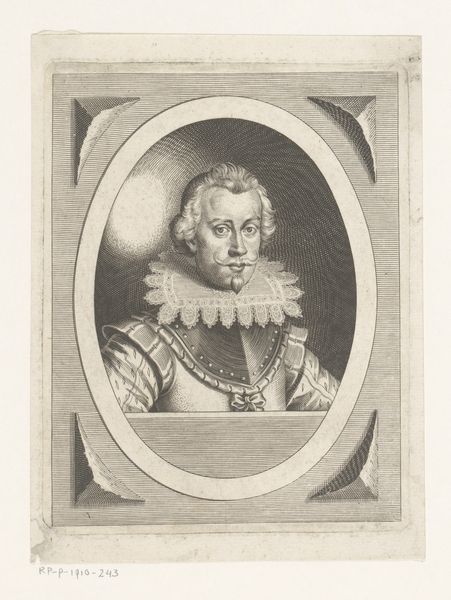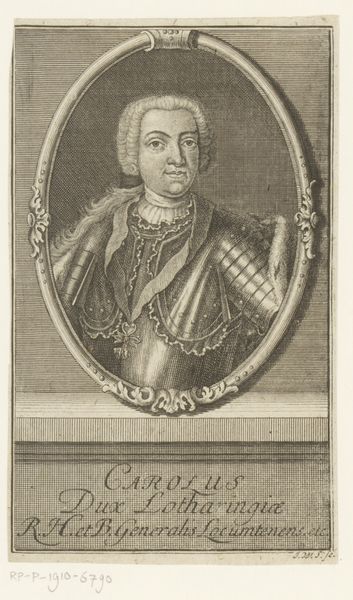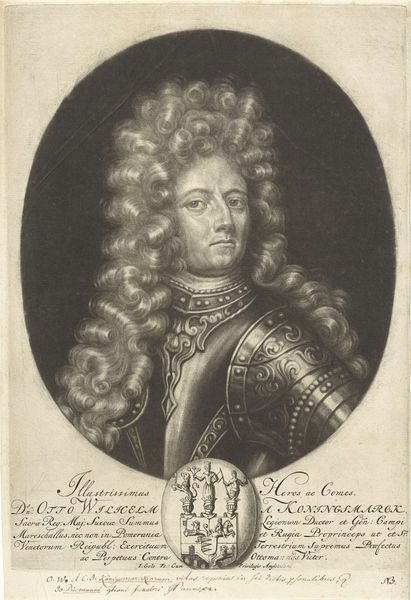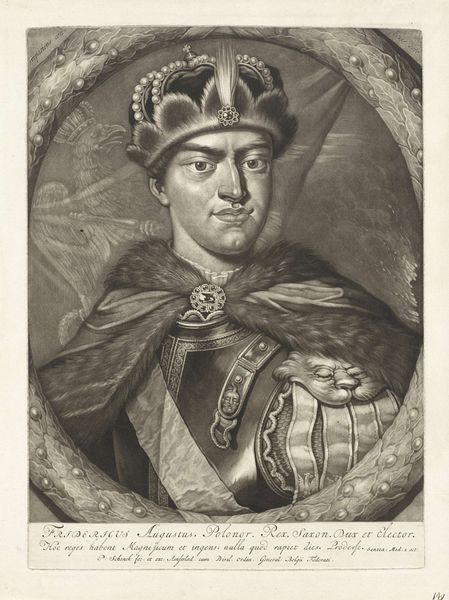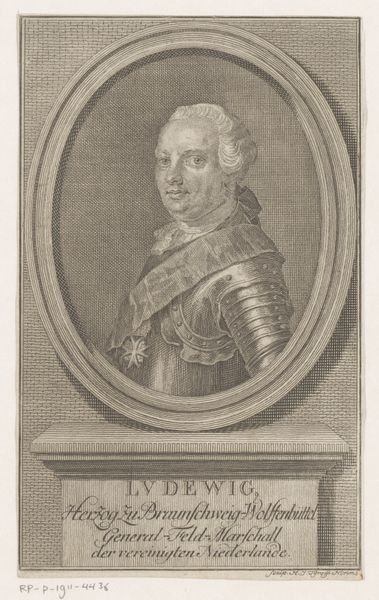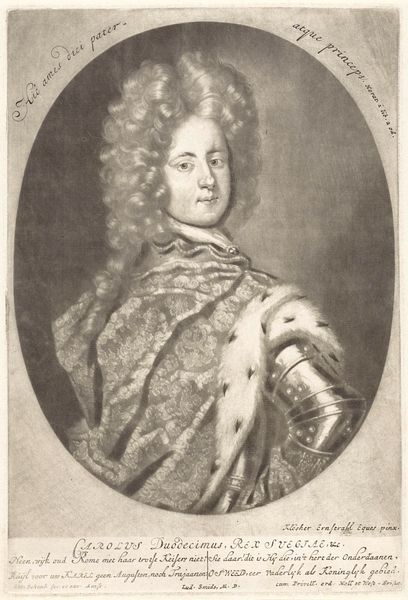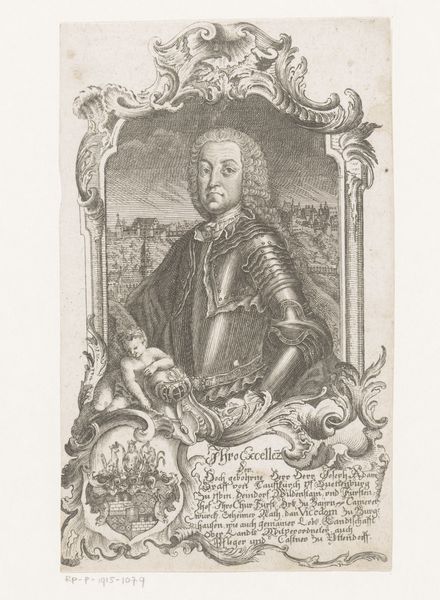
drawing, pencil, engraving
#
portrait
#
pencil drawn
#
drawing
#
baroque
#
old engraving style
#
pencil drawing
#
pencil
#
engraving
Dimensions: height 220 mm, width 189 mm
Copyright: Rijks Museum: Open Domain
Curator: Standing before us is an 18th-century drawing housed here at the Rijksmuseum, entitled "Portret van Peter I de Grote, tsaar van Rusland," or "Portrait of Peter I the Great, Tsar of Russia" in English. Editor: He certainly cuts a regal, if slightly severe, figure. The textures, especially the fur trim and hat, dominate my immediate impression. There's a coldness to the piece, an almost steely quality despite the softness suggested by the medium. Curator: Note the careful use of line and tone; hatching and cross-hatching define form and create volume. Observe the restricted palette—the reliance on monochrome values concentrates our attention on the subject's features and, as you said, the textures of the ermine and ornate details of his garments. Editor: Considering the sitter, Peter the Great's well-documented efforts to modernize Russia, this image seems to straddle two worlds. The opulent, Baroque aesthetic broadcasts power and imperial ambition. The drawing technique suggests perhaps a desire to appear in vogue among Western courts while maintaining the symbolic grandeur befitting an emperor. Curator: The formal presentation contributes, without doubt, to that ambition. Enclosed in a perfect oval, the frame focuses our vision intently upon his persona. This symmetry underscores the intended projection of authority and idealized representation inherent in the portrait genre. The artist clearly seeks to convey Peter's strength and control, even down to the crisp lines of the military-inspired coat. Editor: Given Peter's efforts to establish Russia as a major European power, these symbolic choices feel deliberate, almost like visual propaganda tailored for consumption both domestically and abroad. It is interesting to think how he would respond if seeing his modern interpretation. Curator: Indeed. By reducing reality into meticulously rendered surfaces and compositional harmonies, the artist emphasizes power and dignity rather than individuality. Editor: Looking closer, the interplay between form and content makes the work function on more levels than initially visible. Curator: A remarkable example of visual language in service of power and an impressive demonstration of the engraving arts of the period.
Comments
No comments
Be the first to comment and join the conversation on the ultimate creative platform.
